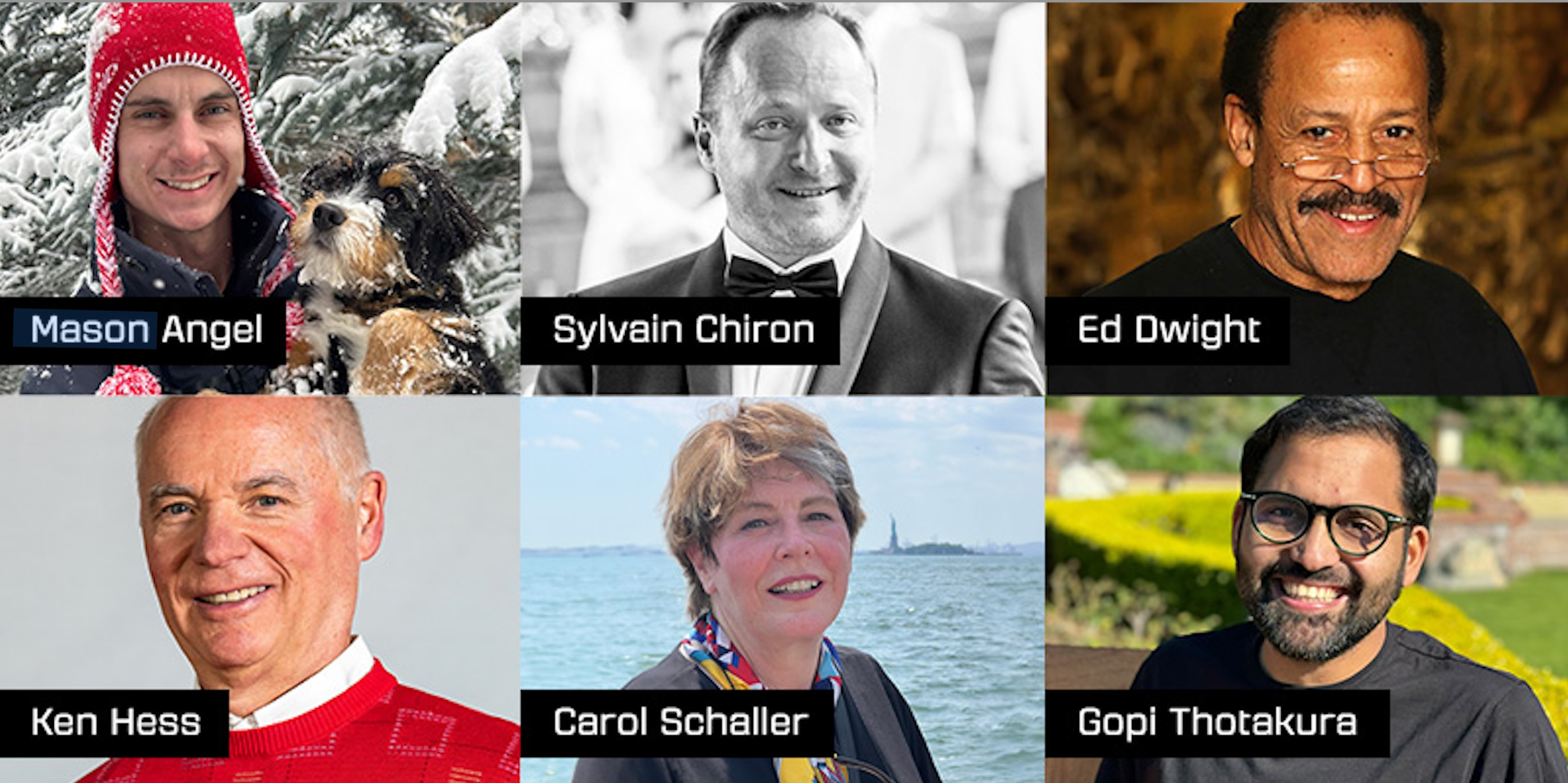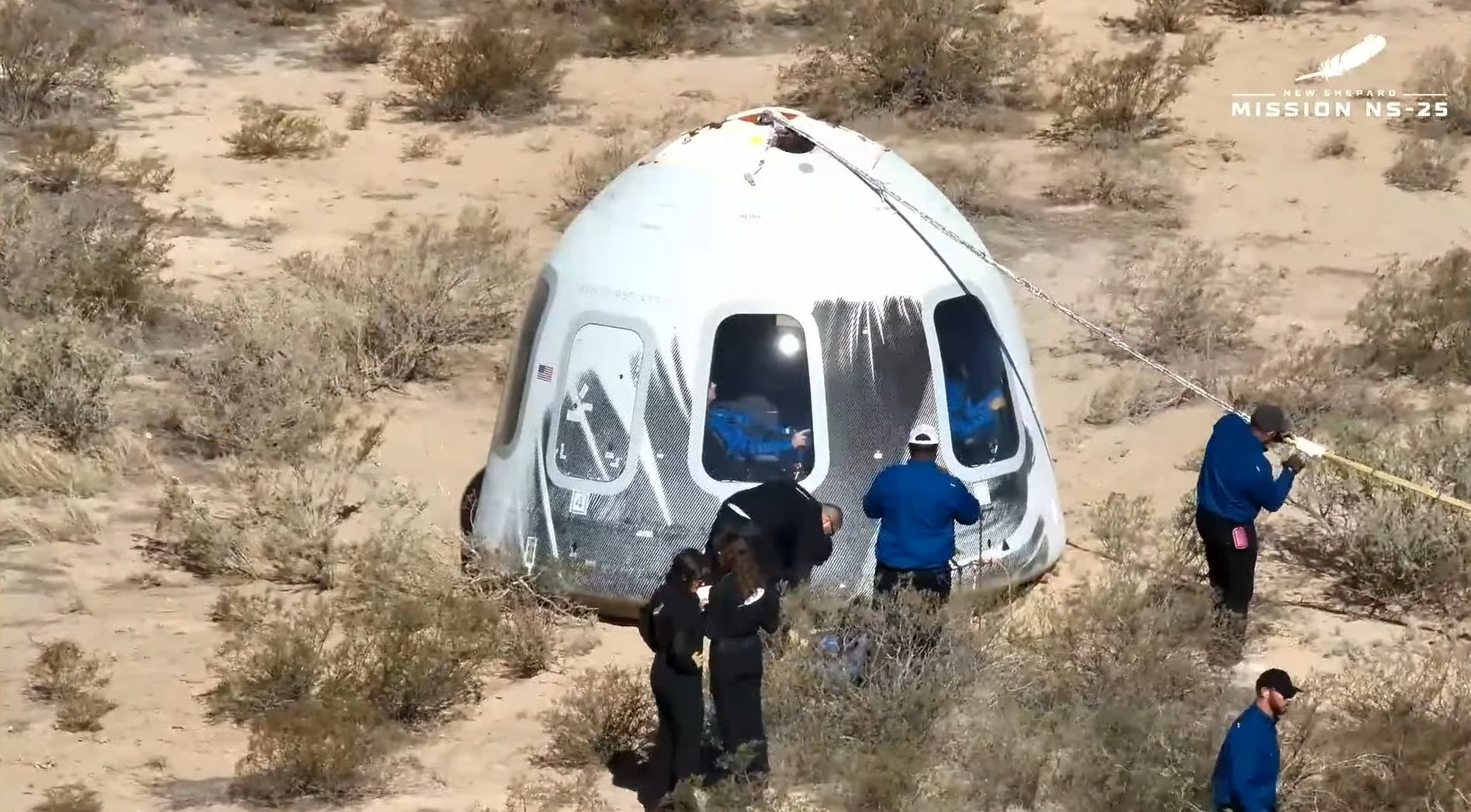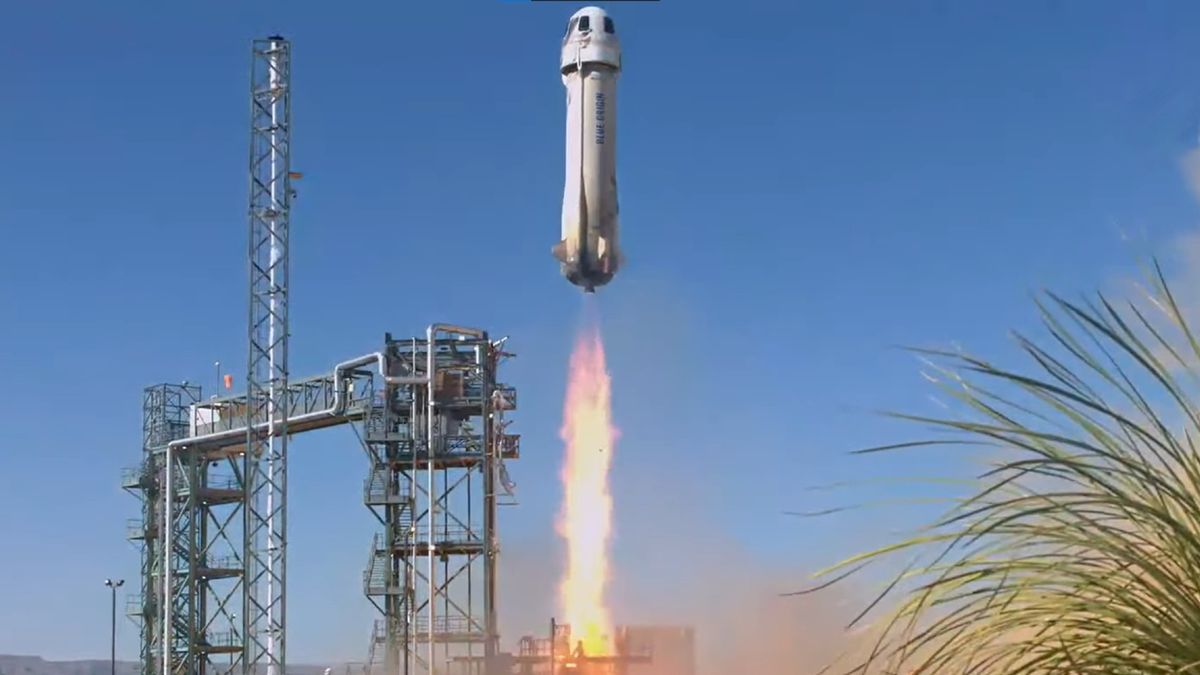Blue Origin’s nearly two-year human spaceflight drought is over.
Jeff Bezos‘ aerospace company launched its NS-25 mission today (May 19), sending six people — including the United States’ first-ever Black astronaut candidate — on a brief trip to suborbital space aboard its New Shepard rocket-capsule combo.
It was Blue Origin‘s first space tourism launch since August 2022. That previous mission went well, but the company’s next flight, an uncrewed research jaunt that launched a month later, did not: New Shepard suffered a serious anomaly, causing the destruction of the first-stage booster. (The capsule landed safely under parachutes.)
New Shepard was grounded for more than a year while Blue Origin investigated the September 2022 accident, which the company eventually traced to a thermo-structural failure in the nozzle of the rocket’s single engine. The vehicle returned to action this past December on an uncrewed flight and is now fully back, with another human mission under its belt.
Related: Meet the crew of Blue Origin’s NS-25 suborbital mission

NS-25 — so named because it was the 25th New Shepard launch to date — lifted off from Blue Origin’s West Texas site today at 10:37 a.m. EDT (1437 GMT; 9:30 a.m. local Texas time).
Six people were on board, including 90-year-old sculptor and author Ed Dwight. Dwight, a former U.S. Air Force captain, carved his name into the aerospace history books more than six decades ago.
“In 1961, Ed was chosen by President John F. Kennedy to enter training at the Aerospace Research Pilot School (ARPS), an elite U.S. Air Force flight training program known as a pathway for entering the NASA Astronaut Corps,” Blue Origin wrote in an description of the NS-25 crew. “In 1963, after successfully completing the ARPS program, Ed was recommended by the U.S. Air Force for the NASA Astronaut Corps but ultimately was not among those selected.”
The first Black American to be selected for a space program was Robert Lawrence, who was picked in June 1967 for the U.S. Air Force’s Manned Orbiting Laboratory project. The MOL, a planned crewed spy outpost, was never built, and Lawrence died in a supersonic jet crash in December 1967. A Black American didn’t reach space until August 1983, when Guion Bluford flew on the STS-8 mission of the space shuttle Challenger. (Sally Ride became the first American woman in space on Challenger’s previous mission, STS-7, which launched in June 1983.)
Dwight was joined on today’s flight by venture capitalist Mason Angel; French craft-brewing magnate Sylvain Chiron; entrepreneur Kenneth L. Hess; retired accountant Carol Schaller; and pilot and aviator Gopi Thotakura.
The six passengers got to experience a few minutes of weightlessness and see Earth against the blackness of space, from a maximum altitude of around 65.7 miles (105 km). Like all new Shepard jaunts, their trip was quite short, ending with a parachute-aided touchdown in the Texas dust at 10:47 a.m. ET (1447 GMT), just ten minutes after liftoff.
The NS-25 booster beat the mission’s capsule back down to the ground, landing seven minutes after takeoff.
The capsule touched down under just two of its three parachutes, but launch commentators on Blue Origin’s livestream assured viewers that “there are multiple redundancy factors in this in this system and so landing with two parachutes is perfectly okay.”

NS-25 was Blue Origin’s seventh crewed spaceflight; the company’s other 18 missions have been uncrewed research efforts.
Blue Origin has not revealed its seat price for New Shepard missions. The company’s chief competitor in the suborbital tourism industry, Richard Branson’s Virgin Galactic, currently charges $450,000 per person for a ride on its VSS Unity space plane.
The piloted Unity is gearing up to fly its seventh commercial mission. Liftoff of that four-passenger flight, known as Galactic 07, is targeted for June 8.

